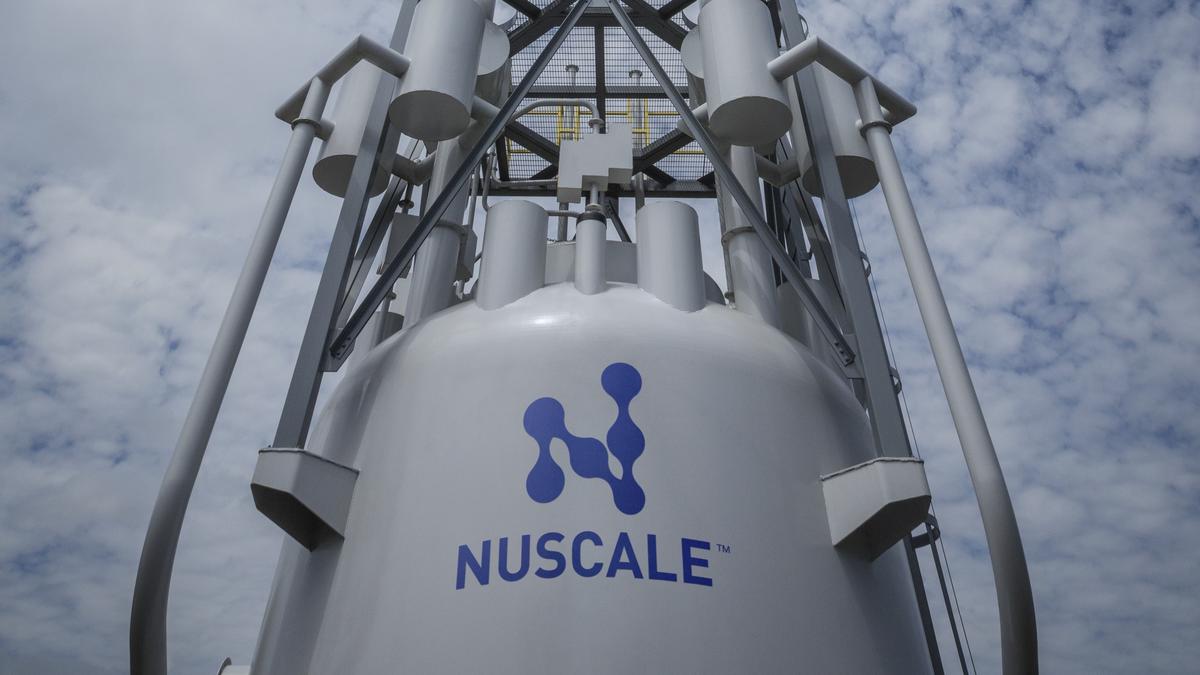
In its fall economic statement, the federal government announced that it “intends to launch an SMR Action Plan by the end of 2020 to lay out the next steps to develop and deploy this technology.” SMR stands for small modular nuclear reactor, the nuclear industry’s latest pipe dream.
At least a dozen corporations around the world are hoping for Canadian taxpayer funding to further develop their SMR designs, all of them still on the drawing board. In October, the federal government handed out $20 million to Terrestrial Energy. Other expectant entities include SNC-Lavalin (which bought Atomic Energy of Canada Ltd.’s CANDU division and is developing a CANDU SMR), United Kingdom–based Moltex Energy, and Seattle-based Ultra Safe Nuclear Corporation.
The federal government says it supports small modular reactors to help Canada mitigate climate change. The government is simply barking up the wrong tree, for several reasons. They are 1) cost, cost and cost; 2) renewables; 3) safety; and 4) radioactive waste.
Nuclear power is very expensive compared to other low-carbon options, and the difference keeps growing because, as the Wall Street firm Lazard documents, the cost of renewables and energy storage is going down rapidly. Peter Bradford, a former U.S. Nuclear Regulatory Commission official, likened the use of nuclear power for mitigating climate change to fighting world hunger “with caviar.”
The high price tag for nuclear power plants has led to a near freeze on new ones around the world. Canada’s last nuclear plant came online in 1994, and Ontarians will remember when plans for two reactors at Darlington were shelved in 2009 after a $26 billion bid—three times the expected budget. Yet the Ford government has now jumped on board the SMR train, and is supporting Ontario Power Generation’s plans to build an SMR at Darlington by 2028.
Nuclear projects have a long history of cost and time overruns. The cost estimate of NuScale, the most advanced SMR project in the USA, has gone up from US$3 billion to US$6.1 billion. That corresponds to nearly CAD $12,000 per kilowatt of generation capacity. In comparison, the construction cost of wind power in Alberta is around $1,500 per kilowatt. There is no way SMRs can be cost-competitive with wind or solar energy.
Natural Resources Minister Seamus O’Regan has said he doesn’t know any way to get to net zero-carbon emissions by 2050 without nuclear power, but that is refuted by many studies, including one from 2016 by a group of academics in Finland and a more recent international collaboration published in Joule magazine.
The Bloc Québécois, the NDP’s natural resources critic Richard Cannings, and the Green Party federal caucus have all said nuclear power does not belong in a climate change plan. It will steal public resources away from energy efficiency and renewable energy projects. The Assembly of First Nations also passed a resolution in 2018 opposing small modular reactors.
A January 2020 article in The Conversation, by M.V. Ramana and Xiao Wei, explains how Ontario can meet its electricity demand using only renewables and hydro power backed up by storage technologies. A recent studypublished in Nature Energy using data from 123 countries shows that renewable energy outperforms nuclear power in reducing emissions. It concludes that nuclear investments just get in the way of building up renewable energy.
Advocates claim we need nuclear energy to back up solar and wind power when the sun doesn’t shine and the wind doesn’t blow. However, nuclear reactors cannot be powered up and down rapidly and safely. If they are, their cost of generating electricity increases further. Nor do nuclear plants run reliably all the time. In France, which generates 70% of its electricity from nuclear power, each reactor was shut down for an average of 96.2 days in 2019, according to the World Nuclear Industry Status Report.
The federal government sees small reactors playing a role in remote off-grid communities and mines that now rely on diesel. But together these sites require less than 0.5% of Canada‘s electricity generation capacity, according to a September 2020 study published in the journal Energy Policy. Power from SMRs could be 10 times more expensive for those communities than adding wind and solar energy. There is also strong opposition to SMRs from First Nations communities, who say these represent an unacceptable risk.
The risk from nuclear power comes in multiple forms. There is the potential for accidents leading to widespread radioactive contamination. Because reactors involve parts that interact rapidly in complex ways, no nuclear reactor is immune to accidents. And they all produce radioactive nuclear waste streams that remain hazardous for up to a million years. Dealing with these issues is a major challenge and there is no demonstrated solution to date.
Canada has a big challenge ahead: to decarbonize by 2050. Let’s get on with it, in the quickest and most cost-effective way, by improving the efficiency of our energy use and building out solar, wind and storage technologies. Let’s forget the dirty, dangerous distraction of small nuclear reactors.
M.V. Ramana is the Simons Chair in Disarmament, Global and Human Security and Director of the Liu Institute for Global Issues at the School of Public Policy and Global Affairs, University of British Columbia. Eva Schacherl is an advocate for protecting the Ottawa River and for environmental and social justice. A version of this article appeared in the Ottawa Citizen on November 16.